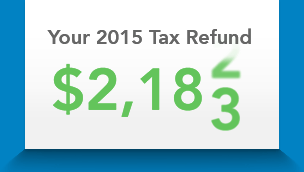Tips for Paying Your Taxes in Installments
Like most Canadians, your employer probably withholds income tax from your earnings so that you won't have a big tax bill to pay at the end of the tax year. In many cases, you may be eligible for a refund based on expenses and tax credits claimed against tax you've paid. However, if you have business or rental income from which no tax is withheld, you might just have a big tax payment. Tax instalments prevent this through quarterly tax payments for the current tax year (though not from balances owed on previous years).
Self-employed farmers and fishermen may pay tax in a single
instalment payment.

Instalment payment triggers
"People with modest rental and business earnings aren't required to pay tax by instalments," says London, Ontario bookkeeper Torrie Becket. "The Canada Revenue Agency will require instalment payments once your tax payable reaches a certain level." The most recent net tax threshold is $3,000 at the time of publication. If you live in the province of Quebec at the end of a tax year, the tax amount is $1,800. Farmers and fishermen have different rules, usually equaling three years of tax over the threshold and a single instalment payment on December 31.
Instalment reminders and making payments
Instalment payments are due quarterly on March 15, June 15, September 15 and December 15 each tax year. The CRA issues instalment reminders to people who may be required to make payments. March and June reminders are issued in February, while September and December reminders go out in August. A payment amount is suggested and payment options are listed. These reminders aren't binding if you won't reach the net tax threshold. You can pay instalments electronically through online or telephone banking, at a bank, credit union or the Canada Revenue Agency's website. Pre-authorized instalment payments can also be set up through the CRA's My Account page.
Payment calculations
There are three options for calculating the most appropriate instalment payment for your situation, each of which include net tax owing, Canada Pension Plan contributions based on your earnings and any voluntary employment insurance payments. * No-calculation option: This choice works best when your situation changes little from year to year. This is the method the CRA uses for the suggested amounts on your instalment reminders. No muss, no fuss, simply pay the instalment amount suggested. If you use these amounts and make payments by the due date, there will be no interest or penalty if your final tax owing is higher than the payments. * Prior-year option: If your current year will be similar to last year but quite different from two years ago, this is the way to go. Calculate your current instalments based on last year's results. * Current-year option: Use this when your earnings will be significantly different than previous years. You'll need to calculate based on your own current year estimates.
Reducing instalment payments
There are a few ways you can reduce or eliminate instalments, depending on your situation. If you have employment earnings as well as business or rental income, you can have your employer deduct more income tax from each pay period. Complete the Personal Tax Credits Return for the current year using a new copy of form TD1, which will direct your company to withhold more of your employment earnings. If you have pension income through Old Age Security or Canada Pension Plan, you can accomplish a similar adjustment by completing form ISP3520 (Request for Income Tax Deductions) and sending it to a Service Canada office. Once your net tax owing is beneath the threshold, you're no longer obligated to make instalment payments.
References & Resources
Photo Credits
- Steve Baccon/Digital Vision/Getty Images
